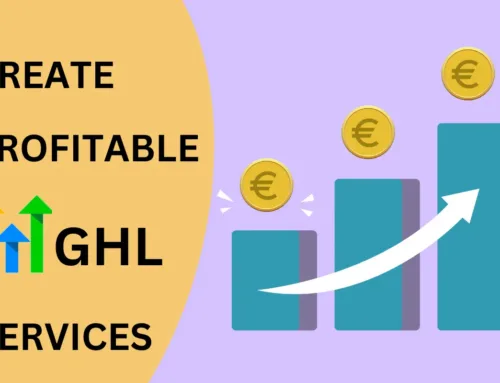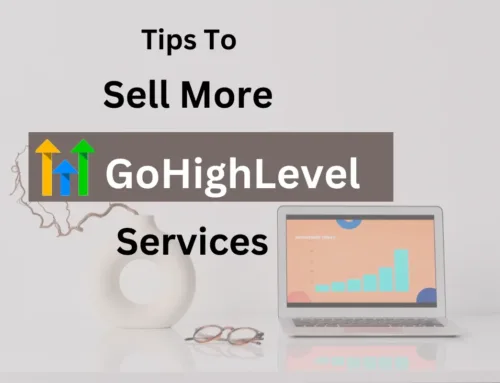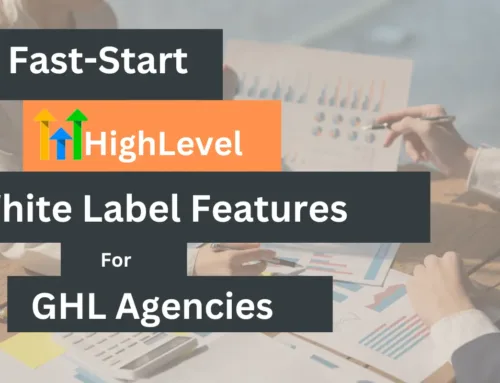If you run a small to medium sized business, every dollar counts. So the idea of a marketing budget can feel overwhelming… overwhelmingly expensive, that is. Fortunately, you don’t need to spend big bucks to spread the word about your business.
There are plenty of tactics you can take advantage of that won’t blow your budget. Here are 14 digital marketing strategies that won’t break the bank. All you need is time, persistence and a bit of creativity.
1. Start a Blog
Let’s start with online marketing 101 – publishing amazing content on a blog.
The thing with blogs is that it can take a long time – years, even – to grow an audience. So you’ve got to have a hell of a lot of passion, patience and persistence – not to mention commitment – to run a blog.
And by commitment, I mean committing to actually publishing regularly so you don’t fall out of favor with Google. Online marketing guru Neil Patel highlights just how important consistency is for SEO in this case study.
Your blog should deliver original content with immense value for your audience if you want it to succeed in the long-term. There’s no point regurgitating what’s already out there. But if you do want to compete in Google Search for popular keywords, make sure your content is better than every other article that is already ranking.
Paying someone to write your articles will cost you, so if you can write them yourself, fantastic! If writing isn’t your thing, ask someone on your team to write posts, or even recruit your whole team to write about and share their expertise.
There are lots of types of articles you could get started with – tips, collections of resources, top 10 lists, tutorials and how-tos.
One of my favorite examples of a blog done well from the very first post is the GrooveHQ blog. When Founder and CEO Alex Turnbull started the helpdesk software company in 2013, he wrote all the posts himself, sharing his lessons on growth, marketing and entrepreneurship.
His posts were packed with information about his marketing experiments, successes and failures, and his journey towards building a sustainable and profitable business. It helped immensely that he was so passionate about his business because it made his posts all the more engaging to read. He really made you feel like you were along for the ride. I even subscribed to his blog so I could follow along with his journey.
While he doesn’t write so much these days, his posts resonated with readers who were also building businesses. His posts were shared widely on social media, and even now I often refer to his first post four years on because it was so memorable.
2. Update Your Email Signature
Here’s an easy one that will take you 5 minutes to do: edit your email signature.
If you don’t have an email signature at all, you’re missing out on a quick and easy means to put your brand in front of the tens (or hundreds, if you’re prolific!) of people you email every day.
But if you’re like most people, you already use your email signature to provide information about who you are, where you work, and your website URL. This is all basic stuff, but what about promoting your social media accounts, events you’re speaking at or even free tools your agency offers?
Ready to turn your email signature into a marketing tool? Check out our guide: How to Use Your Email Signature as a Subtle Marketing Tool
3. Get on Social Media
It’s almost mandatory for businesses these days to have accounts with all the big social media sites – Facebook, Twitter, LinkedIn, you name it. You might want to throw Instagram into that list as well if you run a design agency or other business that’s image-oriented.
Make sure you regularly share content on your social channels – there’s no point having social accounts if you don’t use them! You might also learn a thing or two from trends on how advertisers are using social media.
If you’re a busy business owner then you’ll want to automate your social media as much as possible. There are lots of free social media management tools you can use like Buffer and Hootsuite that you can use to schedule and manage your day-to-day posts.
Check out our post for lots of content inspiration: 27 Ideas for Social Media Posts to Engage Your Followers – With Examples!
4. Create Videos
If writing blog posts isn’t your thing, why not create a video about your product or service and post it on YouTube? Or even create a YouTube channel and share your expertise as a thought leader in your niche?
Video content is valuable, not to mention shareable and easy to film with any smartphone.
Want to know how you can shoot great video content with your iPhone? Check out our guide: How to Shoot Great Social Media Videos With Nothing but an iPhone
5. Create DIY Infographics
Not a designer? Okay, bear with me.
Infographics are a hugely powerful marketing tool because they’re so easily consumed. You can condense a lot of boring information, numbers and statistics into an infographic and suddenly it becomes a fun piece of content that’s ready to share on social media. Infographics are visual eye candy and are great for getting backlinks to your site.
Hiring a designer will hit your hip pocket, but you can make your own cheaply if you don’t mind putting in the work. If you know how to use Photoshop, start there.
Otherwise, check out our round-up of great design tools here: Top 20 Tools for Creating Infographics and Other Social Media Images
6. Repurpose Your Content
When you spend so much time writing blog posts and creating other content for your site, it seems a shame to publish and share it just once. So don’t.
Repurposing your content and turning it into different formats is a great way to get even more value out of what you originally created. For example, you could transform your most popular blog posts into ebooks or guides you can use as lead magnets, turn webinars into video tutorials, internal data into case studies, and statistics into messages you can share on social media.
Don’t be afraid to recycle your old content. Chances are there will be lots of people who didn’t see your old content in the first place so whatever you publish will seem like new content to a large segment of your audience.
Check out WordStream’s post about genius ways you can recycle content for more tips.
7. Join Groups on LinkedIn and Facebook
LinkedIn isn’t just there for when you’re looking for a new job. Rather than just logging in, confirming all your new connections and then logging out, try joining groups in your industry or niche, starting conversations with people and sharing blog posts or articles you think other people will find valuable and informative.
There are so many groups on LinkedIn where people are already connecting. Groups can be a great place to promote your content, share ideas and build awareness around your brand.
Likewise, Facebook groups also provide a fantastic way to connect with people who work in similar fields.
There are some solid tips on how to make the most of LinkedIn groups in this great post on Inc.
8. Run a Cross Promotion
Try reaching out to a complementary business in your niche – a friendly email will do – and suggest a cross promotion. Working together, you can each tap into the other business’s user base to promote your product or service.
There are so many different ways you could cross promote. You could publish a positive review on your blog about the other business and vice versa. You could offer your product or service at a discounted rate to users of the other business and vice versa.
For more information on cross-promotion, check out our post: Getting Started With Cross-Promotion
9. Email marketing
Every agency should have an email list. Email marketing is a great way to engage with new people who are getting to know your agency, as well as maintain relationships with existing customers or clients.
As we’ve mentioned on the Pagely blog before, email converts better than any other marketing channel. In fact, it has an ROI of around 4,300%, according to the Direct Marketing Association.
Why? Because a person’s inbox is their personal space and getting permission to advertise to them there gives you a level of distraction-free attention for your message that you just don’t get with other advertising channels.
You could start by adding an email subscribe form to your website to collect emails. Then, when you’re ready to announce an update to your subscribers or convey some other information, you’ll have an email list all ready to go. It’s best to slowly nurture your subscribers until they are ready to become paying customers or clients.
For more, check out Campaign Monitor’s getting started guide.
10. Comment on Other Blog Posts
Here’s another easy one: Don’t wait for people to comment on your blog. Be pro-active and comment on other blogs in your niche that you follow.
Commenting can be a great way to get noticed by both the blog author and their readers. Plus, helping out others in comments in a great way to share your expertise and demonstrate thought leadership in your industry.
11. Guest Posting
Guest posting can be a great way to reach a whole new audience. Yes, it can be hard work writing content, but with the right approach, research and strategy, it can really pay off.
Blogging Wizard offers some great tips to consider before reaching out to another blog and asking to guest post.
- Contribute to sites that aren’t a waste of your time. Always thoroughly vet blogs and their audience before reaching out.
- Use guest posts to build your email list. In your author bio, you should always link to a landing page where readers can download your lead magnet.
- Connect before you pitch. Comment on a blog post, follow and like on social media, or share and tag a blogger’s content before reaching out and pitching a guest post.
- Reply to each and every comment. Blog comments are a great way to learn from your readers, gain feedback and get to know them better – and get a second shot at guest posting and just generally come across as an awesome person.
- Promote your guest post as you would any other post on your own blog. Don’t just leave it up to the blogger to drive all of the traffic to your post, or share it on Twitter once and think that’s enough.
- Let the world know WHO you can help and HOW. Your guest post will show your author bio below it, so you need to make sure it sends the right message.
- Guest post more. The impact of guest blogging compounds. So, if you make sure a bunch of your posts go live within a similar time frame, you’ll give people the impression that you’re everywhere.
Want more ideas about finding guest post opportunities?
Check out our guide: How to Find and Write Guest Post Articles
12. Create a Referral Program
Word of mouth is powerful stuff, so people telling their friends and colleagues about your agency is incredibly valuable.
Creating a referral program can help you encourage people to spread the word. Try offering existing customers or clients a free hour of service, a free product or some other reward for referring new customers.
Shopify has some great tips here about launching a referral program.
13. Set Up Google My Business
If you want your business to show up in local search, a Google My Business account is a necessity. This will make sure your business is not only visible on Google search, but on Google Maps and Google+ as well.
WPMU DEV has published a fantastic walkthrough that details how to set up Google My Business and integrating it with your WordPress website.
14. Cold Email Outreach
If you’re like me, you hate cold emailing. It feels forced and a bit icky. No one wants to send them and no one wants to receive them. But the fact is, when done right, they can be a very powerful way of connecting with people and sparking a relationship.
Cold emailing is a topic that could fill this whole post, so instead just read this awesome post over at Proposify: The Best Cold Email I Ever Received (And How to Steal His Approach).
Doing More With Less and Winning at Marketing
Now that you’re armed with lots of free and cheap marketing ideas, it’s time to put some or all of them into action. While your marketing budget might be tight or non-existent, starting out small with just some of these tactics will make an impact and get the balling rolling so you can turn your agency from one that no one’s heard about into one that everyone’s heard about.




